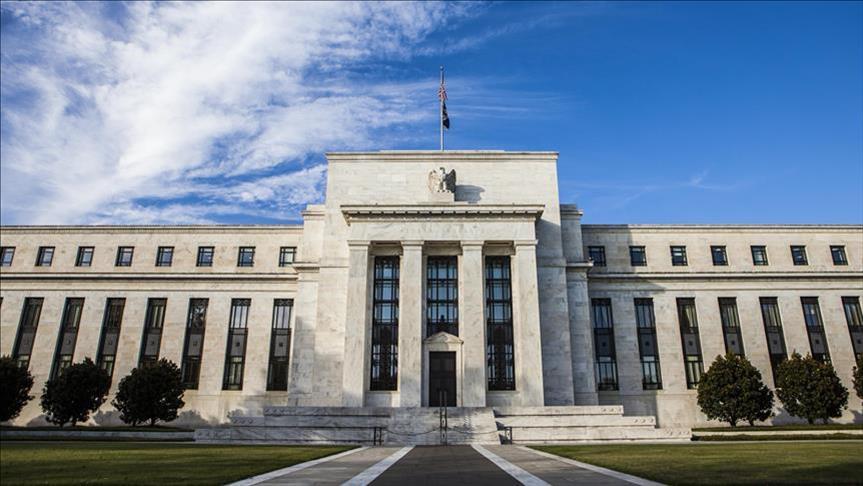Comments
- No comments found

There’s an old saying that “if your only tool is a hammer, then every problem looks like a nail.”
It’s about the temptation to use the tool you have on every problem that comes up–whether the tool you have is actually appropriate for the problem. Hammers work well with nails: they aren’t so helpful with screws, or when trying to water the flowers.
The situation with central banks and economic inequality is a little different. In this case, some of those who are focused on inequality have wondered whether the central bank might offer an appropriate hammer for this particular nail. But in the Winter 2023 issue of the Journal of Economic Perspectives, Alisdair McKay and Christian K. Wolf explain why this is a case of the tool not fitting the problem in “Monetary Policy and Inequality.”
Economic inequality exists for many reasons, of course. The question is whether or how actions by central banks–say, decisions to raise or lower interest rates–might change the level of economic inequality. Perhaps the main complication in the analysis here is that monetary policy will affect different groups in different ways. For example, if you have borrowed money with an adjustable-rate mortgage, you might benefit from lower interest rates. If you haven’t borrowed money, but instead were hoping to receive interest payments on past savings, then lower interest rates will hurt you. If you are unemployed or low-paid, then to the extent that lower interest rates can stimulate the economy and lead to more jobs and higher wages, you are better off. Lower interest rates also tend to encourage investors to scale back on investments that are linked to interest rates (like corporate bonds) and instead to shift over to stock markets. If you own stocks, you benefit from this effect; otherwise, not so much.
Thus, the challenge is to look at how different groups, defined by age and income, are likely to be affected by monetary policy–and in turn how that affects the extent of inequality. After working their way through the evidence, they argue:
On the one hand, the incidence of the individual channels of monetary policy transmission to households is quite uneven. For example, mortgage payments and stocks have much stronger effects at the top of the wealth distribution, while other debt services and labor income have stronger effects at the lower end. On the other hand, once aggregated across all channels, the overall consumption changes are much more evenly distributed. … While there are some differences across groups, we view them overall as relatively modest. … The key takeaway is that … expansionary monetary policy roughly scales up everyone’s consumption by the same amount as the aggregate, leaving each household’s share of total consumption approximately unchanged.
The “dual mandate” of the Federal Reserve’s monetary policy is to worry about output and jobs when those seem at risk, and to worry about inflation when it seems to be rising. If the Fed was to add inequality as another objective, then the central bank would have to address the question of whether it should, in some situations, allow either more inflation or higher unemployment in pursuit of fighting inequality. But the McKay and Wolf essay suggests that monetary policy does not lead to substantial shifts in inequality in the first place. Thus, when it comes to the nail of economic inequality, monetary policy is not the hammer you are looking for.
Timothy Taylor is an American economist. He is managing editor of the Journal of Economic Perspectives, a quarterly academic journal produced at Macalester College and published by the American Economic Association. Taylor received his Bachelor of Arts degree from Haverford College and a master's degree in economics from Stanford University. At Stanford, he was winner of the award for excellent teaching in a large class (more than 30 students) given by the Associated Students of Stanford University. At Minnesota, he was named a Distinguished Lecturer by the Department of Economics and voted Teacher of the Year by the master's degree students at the Hubert H. Humphrey Institute of Public Affairs. Taylor has been a guest speaker for groups of teachers of high school economics, visiting diplomats from eastern Europe, talk-radio shows, and community groups. From 1989 to 1997, Professor Taylor wrote an economics opinion column for the San Jose Mercury-News. He has published multiple lectures on economics through The Teaching Company. With Rudolph Penner and Isabel Sawhill, he is co-author of Updating America's Social Contract (2000), whose first chapter provided an early radical centrist perspective, "An Agenda for the Radical Middle". Taylor is also the author of The Instant Economist: Everything You Need to Know About How the Economy Works, published by the Penguin Group in 2012. The fourth edition of Taylor's Principles of Economics textbook was published by Textbook Media in 2017.
Leave your comments
Post comment as a guest